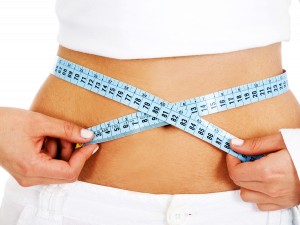Some people achieve weight loss with minimal exercise. Others who exercise regularly have problems losing weight. An international study involving 332 people looked at this problem in detail.
The medical investigators examined the energy expenditure in these 332 adults in 5 different localities. Various levels of exercise were administered. They found that total energy expenditure leveled off. Above a moderate exercise program people reached a saturation point where they did not burn more energy.
In the past a linear relationship was was postulated between exercise and used up energy. If this were so, the demand of the exercise program would have been in a straight linear relationship with total energy expenditure.
In the following link there is a graph that depicts a linear dose response curve of exercise on the left. On the right a constrained dose response curve is depicted.
Why weight loss with minimal exercise?
The 332 adults tested were both men and women from Ghana, South Africa, the Seychelles, Jamaica, and the United States. The energy expenditures were measured with various loads of exercise. The surprising finding in this population was that the results did not follow a linear distribution. Instead the dose response curve followed the constrained pattern. Like on the right side in the link physical activity and total energy expenditure were not linear.
The authors concluded that only 7 to 9% of the total variation of energy expenditure is due to physical activity. With respect to weight loss issues you are limited by exercise. In contrast the authors found that most of the total energy input comes from food intake.
Here is how the total caloric expenditure can be calculated. You take the resting metabolic rate (RMR). Add to it the thermal effect of exercise (TEE). Then add the thermic effect of food (TEF). The last item reflects the fact that digesting food burns up energy from providing the digestive juices.
How to calculate weight loss with minimal exercise
What is energy expenditure? In this link you can learn how to increase your energy expenditure. You do it with small active tasks throughout the day without going to the gym.
Here is a brief instruction of how to calculate the energy that comes from food. You don’t have to calculate exactly how many calories you take in every day. But you know what has lots of calories and what has minimal calories. This is a great help. When you eat foods that contain more protein, you consume fewer calories. Burning less calories allows you to burn fat. This means you are losing weight.
Conclusion
Exercise is useful for cardiovascular fitness. It also prevents heart attacks and strokes. But exercise will not serve you well for weight loss. This is because only 7 to 9% of the total energy expenditure comes from exercise. This has been shown in this study. The majority of energy comes from food consumption. How do we cut back on calorie intake? Eating smaller quantities of food is part of the solution. A higher protein/low carbohydrate diet is the other part of the solution for your weight loss efforts. The second link above summed up what’s new: “You lose weight in the kitchen, you gain health in the gym.” Fact is that we need both.







